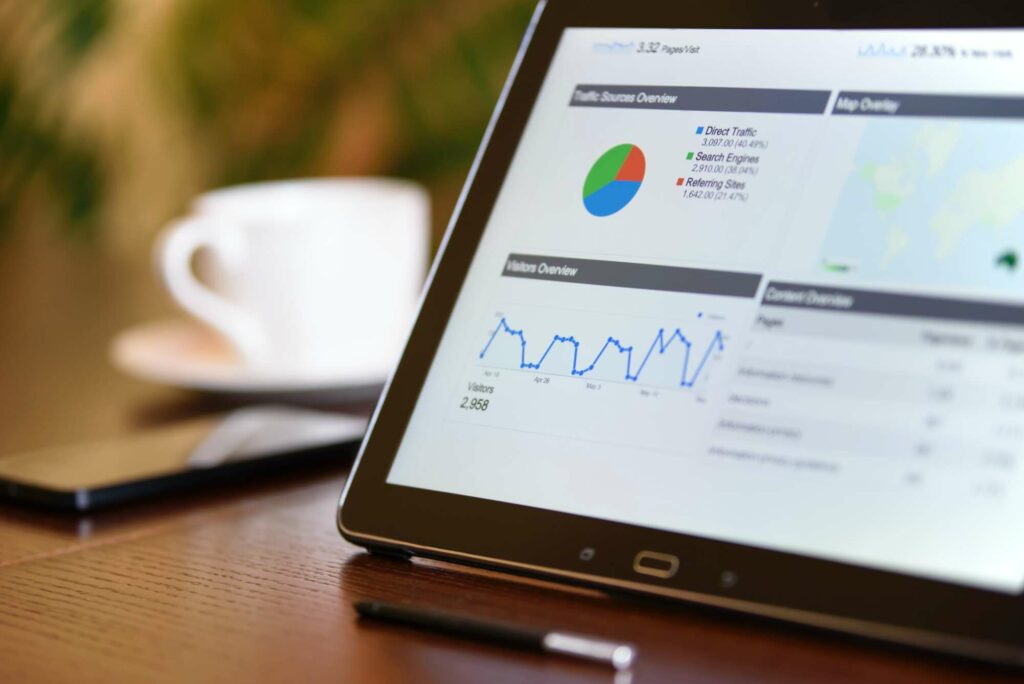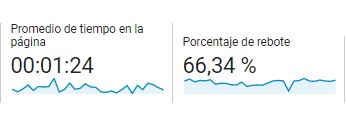If the bounce rate is high, it is usually a negative indicator of our website.
Although it really isn’t always like that.

Stay and find out more about this metric. ?
Exactly, the bounce rate is the percentage of visits that have entered a page, remained there without interacted, and left.
What we were telling you, a priori may seem like a very negative indicator that this percentage is very high.
But it will depend on the URL, page type, and other metrics such as average session time.
For example, the URL of a blog post:
They may have come to this article since the social media broadcast, so they will have entered the article directly. If you’ve been reading the article for 2 minutes and then quit, it’ll be normal.

It was just an informative page. True, if they later interact more with the web, the better. But it’s not that negative.
However, the URL of the catalog site or product cards, or the Home, for example, that they do have a high bounce rate would already be more negative.
Such pages are supposed to require more interaction and would not be an acceptable bounce rate.
Therefore, steps should be taken to improve these numbers.
In short, if this percentage is high it is a red alert that your website has problems and needs improvements.
If your bounce rate is always very high: users come in and out of your website without caring about anything.
That can negatively harm (even if interpreting it isn’t as harmful to your business) to your website.
How? It can affect your positioning. Google may interpret that if your website has this high metric, it may be because your website is of poor quality. And then penalize you by lowering the web in the search ranking.

So, directly or indirectly, decreasing the bounce rate can also help you improve the conversion rate.
Therefore, a low bounce rate means better traffic quality, better positioning, and more conversions.
How to do it? Read on.
We’ve seen before that having the low bounce rate is important (though not always) to improve the bottom line of every online business page: conversions.
Now we’ll give you some tips to reduce it.
If you know your user well, you can propose your content strategy by providing quality and value content for them.
If the content is of quality it will be differential value compared to the competition, because users always look for the best information, and if they find it in you, you will have points earned because you will be attracting their attention.
You may be creating quality content, but what if the reader isn’t finding it?
You have to write thinking about it, and therefore do a keyword investigation and see which ones receive the most search volume from users.
And from those keywords, create that quality content.
We have told you on other occasions that charging speed is very important.
And if your website takes more than 2 seconds to load, it’s very likely that users will leave, hence the importance of reducing it.
If you want tips to optimize your site we leave you the Kiwop article on the truth of PageSpeed, it is a tool that tells you how optimized the web is.
We are giving you several tips that put the reader at the center, that is, your potential client. But it is that he will decide to stay on your website or abandon it, therefore it will be who we have to convince for the first thing.
You have to make it easy for him, if you write long texts, and with fancy language, he’s going to get overwhelmed, he’s not going to read it, and he’s going to leave.

So the important thing is: that the texts are short and easy to understand.
Make him enjoyable reading and don’t have to make any effort.
If they’re also well organized into H2 and H3, with checklists, and include images in between, that further enhances the user experience.
Includes calls to action throughout the web.
They have to be spread throughout the page, but without the user feeling overwhelmed.
Guide users through your website and above all, towards the desired action, towards conversion.
Under no circumstances, they make the user experience much worse.
And not only does it make the user experience worse, but Google penalizes it as well.
It will improve user experience, brand trust, and increase leads.
Users will see that your brand is active and doesn’t get stuck. Relevant and new information can be searched within your website.
Write down the meta descriptions that go on Google when users search.
Optimize them and make them attractive to them.
That way, if users are really interested in the content they will come in and not leave so easily. It will be quality traffic.
You can take advantage to include keywords mentioned above.
So if the user experience for users entering from this device is satisfactory, they won’t march.
Surely there are many more ways to reduce your bounce rate, here are some.
Investigate your person buyer, and maybe you’ll discover some more way to get their attention and keep them from abandoning you.
Reducing your bounce rate is important if you don’t want to lose web positioning, and you want your visitors to be of quality and interested to end up turning them into leads.
Contact us to help you reduce your bounce rate.
You can also follow us on our Instagram profile for more tips on the topic.
At Kiwop, we are specialists in content writing, digital marketing, web development and e-commerce.
Go ahead, start to drop that percentage! ?
If you want to have the website you want or increase the online visibility of your brand, we know how to do it.
Shall we start today?
Leave a Reply